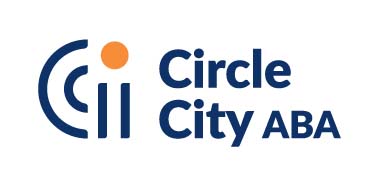At Circle City ABA, we celebrate every step forward. Sometimes, the progress may seem small, but for a child learning how to connect with the world, these moments are huge. In this transformation story, we share how one young client made incredible gains in communication, starting from no words or gestures to pointing independently and even showing patience while playing with a peer.
Please note: Therapy is a highly personal experience, and, like any other treatment, results are not uniform. Several factors determine whether a child will benefit from therapy, including individual characteristics, the nature of their needs, and the quality of support they receive at home and/or school.
Starting Point: Communicating Through Eloping and Grabbing
When this client first began ABA therapy, he had no way to communicate what he wanted. Instead, he would grab items or elope, that is, leave the area, to try to get what he needed.
Autism eloping can be stressful for both the child and the family. It’s a way for some kids to express frustration or to escape situations that feel overwhelming. But without words or gestures, this child didn’t have many safe or practical tools to express himself.
The first step in therapy was teaching him a new way to interact with others.
A Big First Goal: Tolerating Physical Prompts
Before learning to point or speak, this child needed to feel comfortable with others guiding his hand. His very first goal was simple: to tolerate a therapist (called an RBT or Registered Behavior Technician) helping him point to a toy or item.
At first, he would give his hand to the therapist, who would gently help him point to things. With practice, praise, and consistency, he started to get the idea.
Pointing is a powerful skill, it enables kids to ask for things, show interest, and start connecting with others in a new way.
Progress Over Time: Independent Pointing
Over time, this young learner no longer needed help to point. He began doing it on his own. No grabbing. No eloping. He had mastered the skill.
Instead of running off or trying to take something, he could now communicate by pointing. This small action opened the door to many other skills, like learning to make choices, answer questions, and share with others.
A Heartwarming Moment: Pointing and Waiting
Just last month, something truly exciting happened. During playtime, he saw another child playing with a toy he wanted to have. Rather than grabbing it or walking off, he did something amazing—he walked over, pointed at the toy, and waited. There was no trying to take it. No crying or getting upset. He simply stood there, calmly waiting for his turn.
For many families, something like pointing and waiting might not seem like a big deal. But for kids with autism who find social stuff really hard, this was a huge win. It showed he wasn’t just learning how to ask for things; he was starting to connect with other kids, and that’s a big step.
Why These Skills Matter
Kids with autism often face challenges with communication and behavior. Eloping, grabbing, and frustration can all be signs that they need help learning how to express their needs.
Through play-based ABA therapy, children can develop these skills in a safe and supportive environment.
At Circle City ABA, we use fun and structured activities to teach children new ways to connect, play, and grow. Skills like pointing, waiting, and interacting with peers help lay the foundation for a lifetime of success.
How to Get Started with ABA Therapy
If your child struggles with communication, eloping, or other behaviors, we’re here to help.
Circle City ABA offers play-based ABA therapy for children ages 18 months to 17 years. Our centers are filled with sensory-friendly rooms, toys, swings, and supportive therapists who care deeply about helping your child thrive.
We accept most major insurance plans, and our admissions team is happy to answer your questions.
📍 Roswell Center Address: 1400 Hembree Road, Suite 100, Roswell, GA 30076
📞 Phone: 770-230-6221
🌐 Website: www.circlecityaba.com
Let’s take the first step—together.
Disclaimer: Every child is different. This story reflects the progress of one individual. Outcomes may vary based on several factors, including the child’s unique needs and the level of support they receive.



